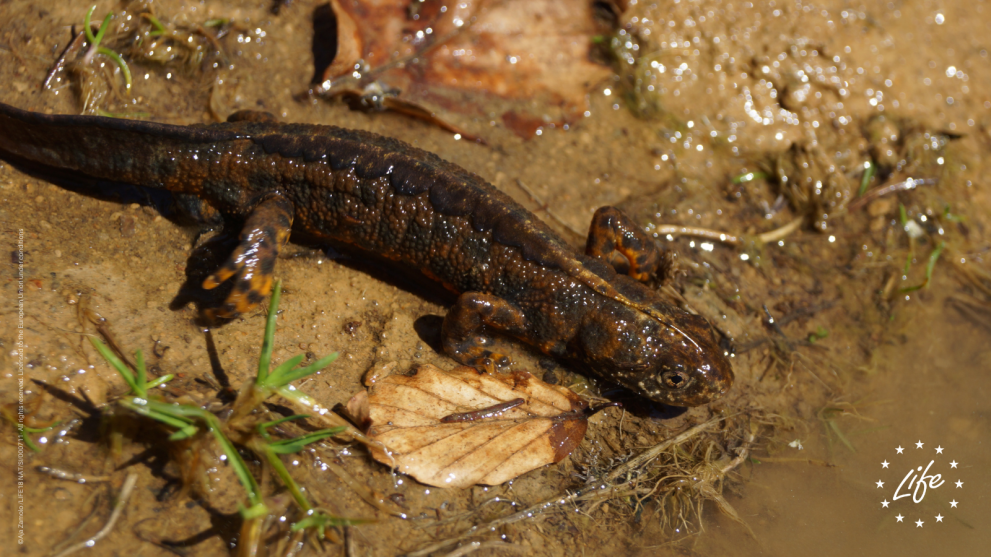
For centuries, frogs, toads and newts have been both revered and feared as supernatural creatures in European folklore. Most famously, the Frog Prince has been a central character from the Brothers Grimm to Disney. Now, LIFE AMPHICON hopes Europe’s amphibians will once again star in a story with a happy ending.
The seven year, €8 million LIFE AMPHICON - short for AMPHIbian CONservation and Habitat Restoration - aims to reverse decades of decline in the populations of three main amphibian species across six Natura 2000 sites in Slovenia, Denmark and Germany. The fire-bellied toad, yellow-bellied toad and Italian crested newt are all on the IUCN Red List and are protected under Annex IV of the Habitats Directive. The project also directly benefits four other amphibian species: the northern crested newt, agile frog, moor frog and European tree frog.
LIFE has been helping protect amphibians for more than 30 years, and earlier this year LIFE AMPHICON - and hundreds of other LIFE projects across Europe - were boosted by the adoption of the new EU Nature Restoration Law. With more than 80 per cent of Europe’s natural habitats in a degraded condition, the law aims to restore wetlands, rivers, forests, grasslands and marine ecosystems - and the species they host.
The new legislation has been welcomed across the EU, including by former European Commissioner for Environment and Slovenian Environment Minister Janez Potočnik. ‘The law's focus on restoring ecosystems, enhancing biodiversity, and promoting sustainable practices stands to benefit everyone - producers and consumers, those living in cities and those in rural communities,’ says Potočnik. ‘By adopting this law, the EU positions itself as a global leader in environmental conservation, influencing international policies and setting a benchmark for global action.’
As we celebrate World Nature Conservation Day, [July 28] it is worth reflecting on some impressive results already posted by LIFE AMPHICON. Its breeding station - which in just two years has released more than 300 specimens into the wild - is the first for amphibians in Slovenia and the first for Italian crested newts in Europe. In just three years, 3 600 fire-bellied toads were raised and released in Denmark. In partnership with the Slovenian Road Agency DRSI, more than 60 road tunnels and ten kilometres of fences are being built to protect amphibians from traffic at key crossing points on their annual migrations.
Earlier this summer, the first of three educational trails was opened to visitors in the Ljubljana Marshland in Slovenia, together with an outdoor classroom, a new bird observatory and a mobile exhibition. The team has also restored or created three coastal wetlands in Denmark, 100 new ponds in Slovenia and more than 30 kettle holes in Germany. Grasslands, hedges and other hibernation sites have also been brought back to life.
‘Amphibians are experiencing significant declines, mainly due to the loss of suitable aquatic and terrestrial habitats in agricultural landscapes,’ says Katja Poboljšaj of Slovenia’s Centre for Cartography of Fauna and Flora, one of the project partners. ‘Knowledge transfer, public awareness campaigns, and education initiatives are key to facilitating replication and promoting public engagement in amphibian conservation,’
As well as the new European Nature Restoration law and Natura 2000, LIFE AMPHICON also contributes to the success of the EU Directives on habitats and on birds; the EU biodiversity strategy, the European Green Deal, and the EU Climate Change Adaption Strategy.
Details
- Publication date
- 26 July 2024
- Author
- European Climate, Infrastructure and Environment Executive Agency

